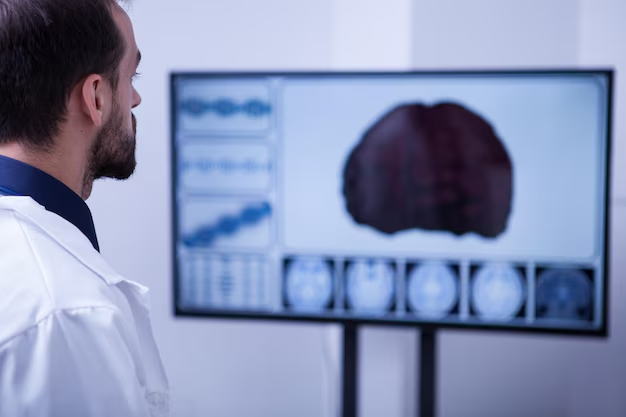Surviving a Brain Aneurysm: What You Need to Know
When you hear the term brain aneurysm, it can be unsettling and even terrifying, and that's understandable. However, while the concept might conjure up anxiety and fear, the truth is more nuanced. Yes, it is possible to survive a brain aneurysm, but understanding the condition, its implications, and the options available can help mitigate its risks.
What is a Brain Aneurysm?
A brain aneurysm, also known as a cerebral aneurysm, occurs when there's a weakening in the wall of a blood vessel in the brain, leading to a ballooning or bulging of that vessel. These aneurysms can vary in size and shape, and while many don't cause symptoms or require treatment, there's a danger when they rupture. A ruptured aneurysm can lead to bleeding in the brain, known as a hemorrhagic stroke, leading to serious consequences or even death.
Types of Brain Aneurysms
- Saccular Aneurysm: This is the most common type and is often referred to as a "berry" aneurysm due to its shape. It usually forms on the arteries at the base of the brain.
- Fusiform Aneurysm: Unlike the saccular type, this involves a wider section of the vessel and doesn't have the "neck" that saccular aneurysms do.
- Mycotic Aneurysm: These are rare and often result from infections that cause the arterial wall to weaken.
Who is at Risk?
Several factors can increase the risk of developing a brain aneurysm:
- Genetics: A family history of brain aneurysms can increase your risk.
- Age: People over the age of 40 are at higher risk.
- Gender: Women are more likely than men to develop aneurysms.
- Lifestyle factors: Smoking, hypertension, and high alcohol consumption can contribute to the weakening of blood vessel walls.
Understanding these risk factors is crucial for positioning yourself for preventive measures or early detection.
Recognizing the Symptoms
Not all brain aneurysms produce symptoms. Unruptured aneurysms might go unnoticed until they enlarge and begin pressing on nerves or brain tissue. Symptoms might include:
- Pain above and behind the eye
- A dilated pupil
- Weakness or numbness
- Vision changes
In cases of rupture, symptoms are more severe and may include:
- A sudden, extreme headache described as the "worst headache of your life"
- Neck stiffness
- Nausea and vomiting
- Loss of consciousness
- Seizures
Early Diagnosis and Tests
If you suspect a brain aneurysm or experience symptoms, medical evaluation is critical. Doctors might perform tests including:
- CT Scan: To check for bleeding in the brain.
- MRI or MRA: For a detailed image of brain arteries.
- Cerebral Angiography: For a precise picture of blood flow in the brain.
Treatment Options
Treatment is influenced by the aneurysm's size, location, and risk factors for rupture. Options include:
Non-Invasive Monitoring
For smaller, less risky aneurysms, the focus may be on regular monitoring including periodic scans and lifestyle adjustments focusing on cutting down risk factors like smoking and controlling blood pressure.
Surgical Interventions
- Clipping: Involves placing a small clip on the aneurysm to block blood flow and prevent rupture.
- Endovascular Coiling: Uses a catheter to fill the aneurysm with coils to block blood flow.
- Flow Diversion: A newer technique that diverts blood flow away from the aneurysm.
The choice of treatment depends heavily on individual patient factors and should be made in consultation with a medical professional.
Recovery and Rehabilitation
Surviving a brain aneurysm, especially a ruptured one, can be just the start of a longer journey. Recovery varies based on the extent of bleeding and damage. Rehabilitation may include:
- Physical therapy: To regain movement and strength
- Occupational therapy: For relearning daily activities
- Speech therapy: If speech has been affected
- Cognitive therapy: To help with memory and thought processes
It's essential to have a strong support system and access to medical follow-up care.
The Path Forward: Living Post-Aneurysm
Living after a brain aneurysm involves ongoing adjustments and support. Here are some practical steps and considerations:
- Regular medical check-ups: Staying in touch with healthcare providers for scans and evaluations.
- Lifestyle modifications: Adopting healthier habits can significantly reduce future risks.
- Emotional support: Coping with the psychological impact can be as important as physical recovery.
Conclusion: Empowerment through Knowledge
While the idea of a brain aneurysm is daunting, survival is very much possible, especially with early detection and appropriate intervention. It's crucial to stay informed, be proactive in risk management, and work closely with healthcare professionals. Empowering oneself with the right knowledge and support can immensely improve outcomes and quality of life.
Remember, awareness and early action are your best defenses against the threat of brain aneurysms.
Summary: Key Takeaways and Tips
- Understand Risk Factors:
- 📌 Family history, age, gender, and lifestyle choices affect risk.
- Recognize Symptoms:
- 🚨 Watch for sudden severe headaches, vision changes, and neurologic symptoms.
- Seek Early Diagnosis:
- ⚕️ Medical tests like CT, MRI, and angiography can identify aneurysms.
- Explore Treatment Options:
- 🏥 Options range from monitoring to surgical interventions like clipping and coiling.
- Commit to Recovery and Lifestyle Changes:
- 🌱 Physical therapy and healthy habits are crucial for recovery.
- Build a Support System:
- 🤝 Emotional and community support can aid in rehabilitation and adaptation.
By understanding the signs, risks, and treatments involved with brain aneurysms, you can navigate the uncertainties with confidence and clarity.
